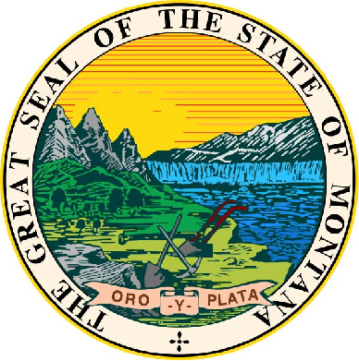
Are You Registered to VOTE? DCS Makes it EASY!
August 5, 2023
March to End Fossil Fuels 9/17
September 10, 2023Pennsylvania has its own Environmental Rights Amendment, passed unanimously over 50 years ago. It says, in part: “The people have a right to clean air, pure water, and to the preservation of the natural, scenic, historic, and esthetic values of the environment.”
Coming Soon: More from Attorney Sailer on green amendments in other states, including PA and NY.
Hooray for the Montana state court! These days I am amazed and relieved when an authority figure does the legally correct thing and stands up for the environment. The recent decision out of Montana state court is just such a moment. Environmentalists, take note and take heart.
Background
First, a (very) brief science refresher. Carbon dioxide (CO2) is an important heat-trapping gas that comes from the extraction and burning of fossil fuels (such as coal, oil, and natural gas). CO2 is also known as a greenhouse gas (GHG). Montana is a significant producer of coal, oil and gas. The fossil fuel extraction, transportation, and combustion that the state has authorized produces high levels of GHG emissions that contribute to climate change. The number is astounding: since 1960, 3.7 billion metric tons of CO2 was emitted by all fossil fuels extracted in Montana. In 2019 alone, the total annual fossil fuels extracted in Montana led to about 70 million tons of CO2 being released into the atmosphere once the fuels were combusted. That total exceeds the output of many other countries, including Brazil, Japan, Mexico, Spain, or the United Kingdom.
The Lawsuit
These alarming facts about the degradation of the environment by Montana’s fossil-fuel based energy system were made public through a lawsuit filed in 2020 by a group of 16 concerned Montana youth (ages ranged from 2 to 18) in Montana state court. They sought to stop Montana from issuing permits for energy-related projects without first considering the project’s CO2 emissions and climate impact. Montana had recently amended the Montana Energy Policy Act so that state agencies were prohibited from evaluating a proposed energy project’s greenhouse gas (GHG) emissions and corresponding impacts to the climate in the state or beyond the state’s borders. Montana had also eliminated remedies for anyone who might sue to prevent the state from taking action or approving energy projects on GHG or climate change grounds. The plaintiffs argued these amendments were unconstitutional.
The group of Montana youth sued the State of Montana, Governor Greg Gianforte, and five state agencies (the Department of Environmental Quality, Montana Department of Environmental Quality, Montana Department of Natural Resources and Conservation, Montana Department of Transportation, and Montana Public Service Commission).
The Court’s Ruling
On August 14, 2023, state trial court judge Kathy Seeley ruled in favor of the children. In a detailed, well-reasoned and lengthy opinion, Judge Seeley declared the offending law violated Montana’s constitution and further held that the State was constitutionally mandated to consider the environmental impact of any proposed energy project. The court pointed to the State’s Bill of Rights, which guarantees Montanans a fundamental right “to a clean and healthful environment, which includes climate as part of the environmental life-support system.” Montana is one of the few states in the nation that identifies this right as fundamental, on par with, for example, free speech, and requires the State to strictly scrutinize each energy project and determine its impact on this right to a clean and healthful environment. Scrutinizing the actions of the State and its agencies, Judge Seeley found that they utterly failed to protect the youth’s fundamental constitutional right. Montana’s leaders, moreover, had abandoned their constitutional duty to hold the land in trust for the benefit of the public. Montana not only did not consider environmental impacts of energy projects that it was permitting, but had taken the extreme step of amending the law to forbid any consideration of GHG emissions and corresponding impact on the climate. As a consequence, the State of Montana was a big contributor to climate change globally and was significantly harming the environment and the plaintiffs’ health.
It was a tough, three-year fight. The lawsuit, titled Held vs. Montana, was based on the “clean and healthful environment” guarantees of the Montana constitution. Plaintiffs brought in a multitude of highly credentialed scientists and doctors. Each child was deposed and asked to describe how they believed they were personally affected by the GHG emissions and the degraded climate. The plaintiffs presented data showing the quantity of GHG emissions that have been released over time by Montana and how that amount was increasing, and then pointed to the resulting harm to the land, water, air and health of people, plants and animals. They also proved that Montana was aware of the dangerous impacts of GHG emissions on climate change for at least thirty years. The State knew how climate change was harming Montana and its residents, through rising temperatures, early snowmelt, earlier spring runoff, flooding, changes in water availability and stream temperatures, increase in forest mortality due to insects, and increasing wildfires.
Once the court agreed that there was a constitutional right to a clean and healthful environment, which that the State had violated with its hugely harmful fossil fuel based energy program, Judge Seeley was faced with the ultimate question. Was Montana’s economic interest in generating fossil fuel energy so compelling, so essential, that it had no choice but to stay the course, no matter the harm? The simple answer was no, it was not. With a nod to the evidence presented by the children, of viable alternative energy sources, the court stated that the competing interests could co-exist if the State pursued clean renewable energy. According to Judge Seeley, “clean renewable energy is technically feasible and economically beneficial in Montana.”
Judge Seeley, this is where you can drop the mike and take a bow.
The court’s opinion vividly exposes the far-reaching consequences of GHG emissions on Montana’s environment. For those of us who love the Delaware river, it’s hard to read the description of the havoc anthropogenic climate change has wreaked on Montana’s famous rivers. The Bitterroot, Madison, Powder, Smith, Yellowstone, Clark Fork, Missouri, Flathead, Blackfoot, and Shields rivers, among others, have experienced one or more of the following: a decline in water quality, algea blooms, declining fish populations/die offs, documented record low stream flows, increased temperatures, fishing restrictions and river closures. At the rate of degradation that is documented in this ruling, it’s not hard to believe that at some point in our near future, a river will no longer run through it. Apologies to Norman Maclean.
The 1972 ”Green” Amendment to Montana’s Constitution Was Critical to this Win
Credit for this phenomenal result is also due the far-sighted drafters of the 1972 constitutional “green” amendment, which provided the legal basis for the lawsuit. The story begins back in the early 1970’s, when Rachel Carson’s book Silent Spring galvanized alarmed Americans across the country to take action to rein in the chemical industry that was raining down poison and killing plants, wildlife, insects and people. At the federal level, President Nixon created the EPA and signed into law the Clean Air and Clean Water Acts, while states around the nation amended their constitutions and attempted to guarantee that their citizens could forever enjoy a clean, healthful and stable environment. At a 1972 constitutional convention, Montanans added the fundamental right to “a clean and healthful” environment to the state constitution’s bill of rights, meaning that any action taken by the State of Montana had to take into consideration the effect of the action on the climate. The drafters understood that placing these environmental protections in the constitution was more secure than doing it by statute, as statutes are easily subject to the whims of the sitting legislature. Judge Seeley put this story about the 1972 constitutional convention and quoted those drafters in her decision.
Allow me to get into the weeds of constitutional text, because it is critically important to understand what the winning language looks like. In the early 1970’s, other states amended their constitutions, but only Pennsylvania (yay!) and Montana thought to create a fundamental right to a clean environment in their respective Bill of Rights and thus vest it with enforceable power.
Montana’s key 1972 amendments include: Article II, section 3, which states that “All persons are born free and have certain inalienable rights. They include the right to a clean and healthful environment[;]” Article IX, section 1, which states that “[t]he state and each person shall maintain and improve a clean and healthful environment in Montana for present and future generations;” and Article II, section 15, which states that Montana citizens under the age of 18 also “have a fundamental right to a clean and healthful environment.” This last provision persuaded Judge Seeley that the “right to a clean and healthful environment is intended to protect Montana’s children and future generations.”
Finally, the constitutional drafters created a public trust for the waters of Montana, and appointed the state as trustee. Under what’s known as the public trust doctrine, the government, acting as trustee of a resource, must maintain some level of quality in the resources, and protect those resources from being depleted or expended by private interests to the detriment of future generations. Article IX, Section 3(3) states: “All surface, underground, flood and atmospheric waters within the boundaries of the state are the property of the state for the use of its people and subject to appropriation for beneficial uses as provided by law.” Thus, Montana’s duty to protect all of the State’s waters bars it from acting in the interest of any person other than the beneficiary (the citizens of Montana), if that would result in damaging or depleting the public resource.
As an aside, I note the foresight of the drafters of these amendments in including atmospheric waters in the language of this public trust provision. That reference to atmospheric waters brings air quality into the constitution’s purview.
This case is a big win for Montana and beyond. While it is a trial court decision that can be appealed, this decision is good precedent and incentive to green activists around the nation. A copy of the Montana state court’s decision can be found here.
Jacqueline Sailer is a New York attorney who spends a lot of time on the Delaware river.




